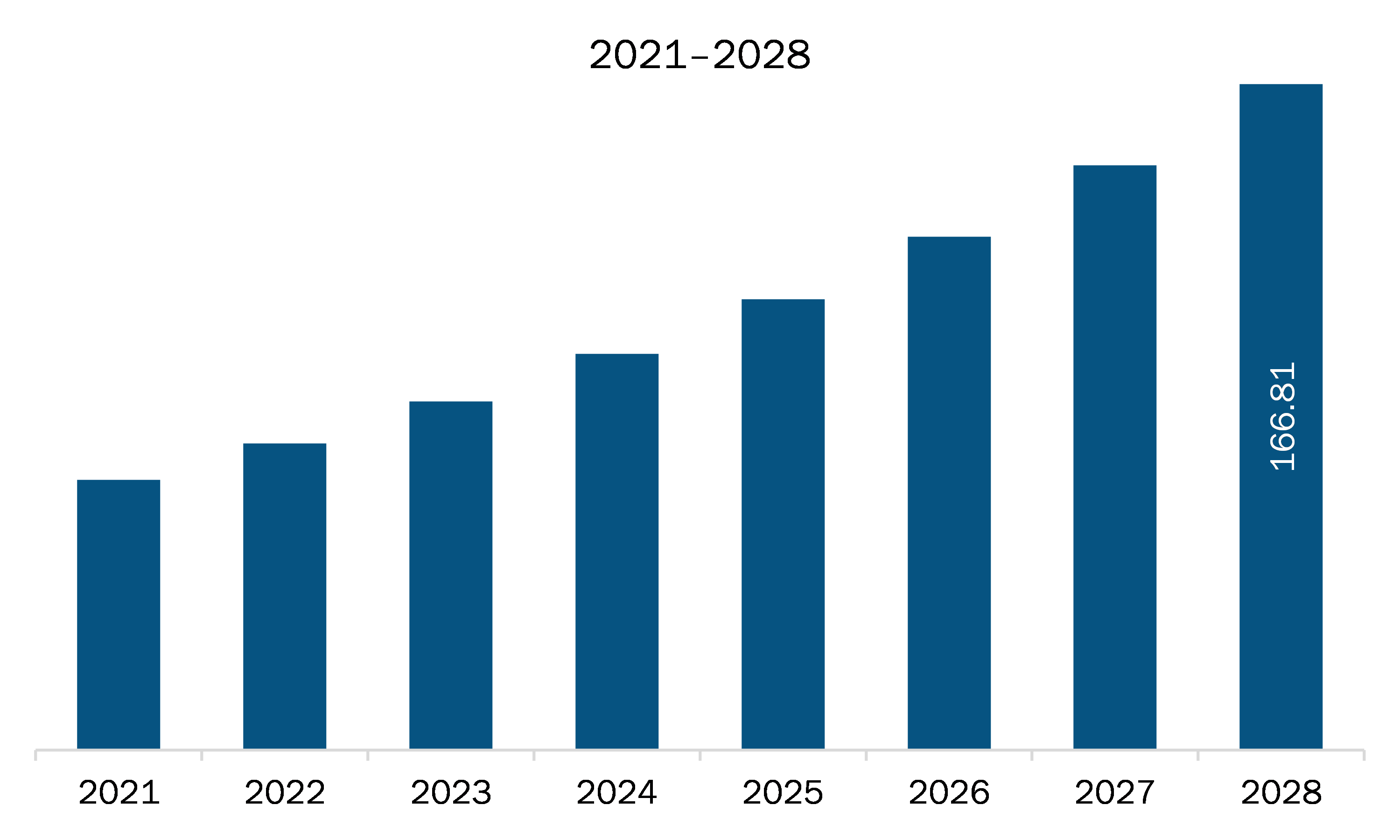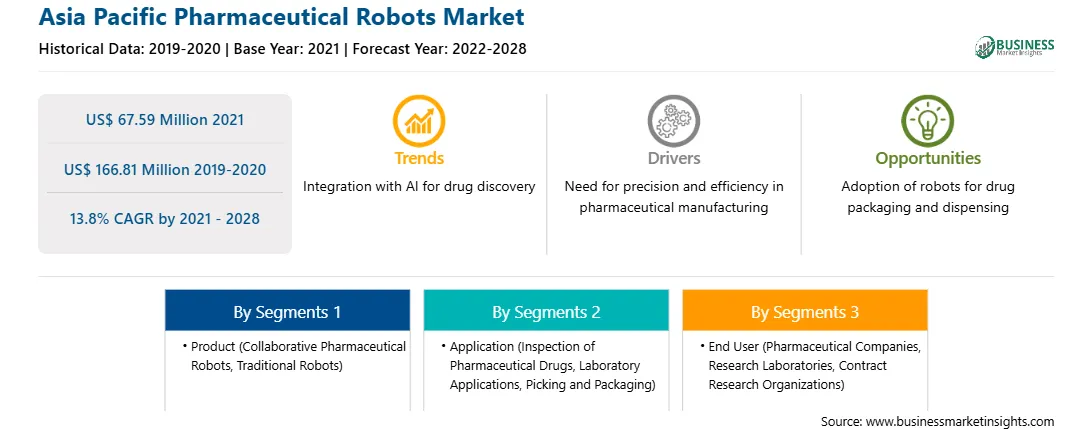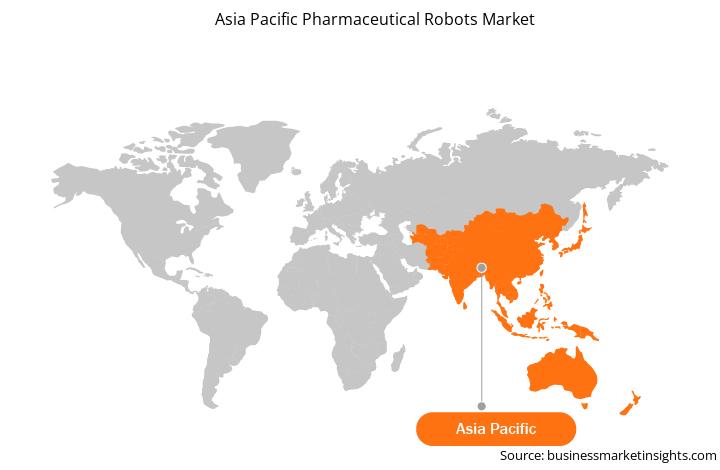The Asia Pacific pharmaceutical robots market is a highly fragmented market with the presence of considerable regional and local players providing numerous solutions for companies investing in the market arena. Several conferences, workshops, and exhibitions are being held across the region to spread the awareness of robotic systems. GlaxoSmithKline, has collaborated with other pharmaceutical companies to assess the robotic platforms for precise, automated dispensing of solids and AstraZeneca has worked on combined efforts to improve the measurement and prediction of active pharmaceutical ingredient solubility. Furthermore, Robotics 2019 Conference was held in November 2019 in Tokyo, Japan. The main agenda of the conference was to grow awareness regarding robotics, automation, and artificial intelligence. The conference discussed nanorobotics, which allows accurate nanoscale measurements. Also, the Digital Robot Pharma Fab Workshop was held in June 2019 in Amsterdam, The Netherlands. The workshop demonstrated the applications of robotics in the pharmaceutical industry and introduced the advantages and risks associated with it. The workshop included lectures and hands-on training by mock-ups and live activities presented in the exhibition hall. Thus, the growing conferences, workshops, and exhibitions to create awareness regarding pharmaceutical robots propel the growth of the Asia Pacific pharmaceutical robots market.
Countries in the Asia Pacific are facing challenges due to increasing incidences of COVID-19 in the second wave of the pandemic. The pharmaceutical robots offer plentiful benefits to the patients and pharmacies and the key members of the healthcare team. Automated systems also have inordinate cost-effective and safety benefits, and they rationalize the pharmacy types by improving data workflow. Moreover, according to report published in August 2020, Indian pharma needs to expedite its adoption of digitization and automation in manufacturing and supply chain management. In this regard, the sector is working on the areas of Internet of Things and Artificial Intelligence to embed these technologies into machine and manufacturing technology to be on par with the Asia Pacific norms. Thus, a rising infection rate has boosted the demand for medications. This increasing infection count has shown a positive impact on the demand for pharmaceutical robots. Therefore, the healthcare facilities and pharmacies are preferring these robots that have boosted their demand.

Strategic insights for the Asia Pacific Pharmaceutical Robots provides data-driven analysis of the industry landscape, including current trends, key players, and regional nuances. These insights offer actionable recommendations, enabling readers to differentiate themselves from competitors by identifying untapped segments or developing unique value propositions. Leveraging data analytics, these insights help industry players anticipate the market shifts, whether investors, manufacturers, or other stakeholders. A future-oriented perspective is essential, helping stakeholders anticipate market shifts and position themselves for long-term success in this dynamic region. Ultimately, effective strategic insights empower readers to make informed decisions that drive profitability and achieve their business objectives within the market.

| Report Attribute | Details |
|---|---|
| Market size in 2021 | US$ 67.59 Million |
| Market Size by 2028 | US$ 166.81 Million |
| Global CAGR (2021 - 2028) | 13.8% |
| Historical Data | 2019-2020 |
| Forecast period | 2022-2028 |
| Segments Covered |
By Product
|
| Regions and Countries Covered | Asia-Pacific
|
| Market leaders and key company profiles |
The geographic scope of the Asia Pacific Pharmaceutical Robots refers to the specific areas in which a business operates and competes. Understanding local distinctions, such as diverse consumer preferences (e.g., demand for specific plug types or battery backup durations), varying economic conditions, and regulatory environments, is crucial for tailoring strategies to specific markets. Businesses can expand their reach by identifying underserved areas or adapting their offerings to meet local demands. A clear market focus allows for more effective resource allocation, targeted marketing campaigns, and better positioning against local competitors, ultimately driving growth in those targeted areas.

he pharmaceutical robots market in Asia Pacific is expected to grow from US$ 67.59 million in 2021 to US$ 166.81 million by 2028; it is estimated to grow at a CAGR of 13.8% from 2021 to 2028. Cloud robotics is an emerging field of robotics rooted in cloud computing, cloud storage, and other Internet technologies centered on the benefits of converged infrastructure and shared services. Connecting robots to the cloud increase computational power, storage, and communications. Cloud robots communicate with each other and thus operations are carried out easily. The Google Cloud Robotics Platform combines AI, robotics, and the cloud to enable the opening of an ecosystem of automation solutions that use cloud-connected collaborative robots. Along with AI and machine learning services, the robots will be able to efficiently carry out processes in highly dynamic environments in the manufacturing industry. Moreover, in the industry, the cloud is an ally for processing a large amount of data. Cloud-based software, with appropriate security protocols, can be adopted to facilitate integration and automation. Its use helps reduce the paperwork of the companies, making data manageable. Thus, cloud robotics is expected to become the trend in the pharmaceutical robot market in the future.
Based on product, the traditional robots segment accounted for the largest share of the Asia Pacific pharmaceutical robots market in 2021. Based on application, the picking and packaging segment accounted for the largest share of the Asia Pacific pharmaceutical robots market in 2021. Based on end user, the pharmaceutical companies segment accounted for the largest share of the Asia Pacific pharmaceutical robots market in 2021.
A few major primary and secondary sources referred to for preparing this report on the Asia Pacific pharmaceutical robots market are company websites, annual reports, financial reports, national government documents, and statistical database, among others. Major companies listed in the report include ABB, Kawasaki Heavy Industries, Ltd., Yaskawa Electric Corporation, Universal Robots, Marchesini Group S.p.A, Denso Corporation, Fanuc Corporation, Seiko Epson Corporation, Shibuya Corporation, and Weiss GmbH.
The Asia Pacific Pharmaceutical Robots Market is valued at US$ 67.59 Million in 2021, it is projected to reach US$ 166.81 Million by 2028.
As per our report Asia Pacific Pharmaceutical Robots Market, the market size is valued at US$ 67.59 Million in 2021, projecting it to reach US$ 166.81 Million by 2028. This translates to a CAGR of approximately 13.8% during the forecast period.
The Asia Pacific Pharmaceutical Robots Market report typically cover these key segments-
The historic period, base year, and forecast period can vary slightly depending on the specific market research report. However, for the Asia Pacific Pharmaceutical Robots Market report:
The Asia Pacific Pharmaceutical Robots Market is populated by several key players, each contributing to its growth and innovation. Some of the major players include:
The Asia Pacific Pharmaceutical Robots Market report is valuable for diverse stakeholders, including:
Essentially, anyone involved in or considering involvement in the Asia Pacific Pharmaceutical Robots Market value chain can benefit from the information contained in a comprehensive market report.